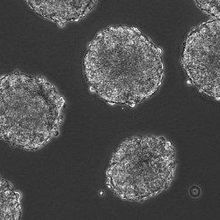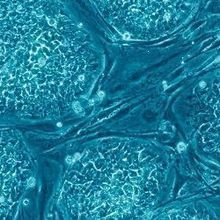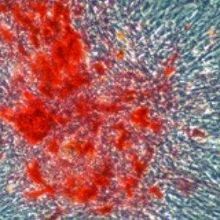Login
Subscribepluripotency

Image of the Day: Morphing Cells
The Scientist and The Scientist Staff | Mar 27, 2018 | 1 min read
By removing a single gene, researchers change the developmental fate of tumor cells in mice.

Stem Cells Made by Modifying the Epigenome with CRISPR
Abby Olena, PhD | Jan 25, 2018 | 3 min read
Researchers use the technique to turn on Oct4 or Sox2 in mouse embryonic fibroblasts and convert them into pluripotent cells.

What Is Stemness and Pluripotency?
Deanna MacNeil, PhD | 5 min read
Scientists study pluripotent stems cells to understand early development and how to use them in regenerative medicine, disease modeling, and drug discovery.

Researchers Make Knockout Stem Cell Lines in One Step
Ruth Williams | Dec 1, 2017 | 3 min read
Combining gene editing and stem-cell induction improves efficiency of functional genetic analyses.

New Techniques Detail Embryos’ First Hours and Days
Jef Akst | Dec 1, 2017 | 10+ min read
New technologies reveal the dynamic changes in mouse and human embryos during the first week after fertilization.

The Scientist Speaks - The Reality of Regenerative Medicine
The Scientist | 1 min read
After decades of research the potential of regenerative medicine becomes a life-saving reality.

Infographic: How Embryos Take Control of Their Own Development
Jef Akst | Nov 30, 2017 | 3 min read
The switch from maternal factors involves dynamic reprogramming of the zygotic genome.

Partial Reprogramming Offers a Way to Generate High Volumes of Progenitor-Like Cells
Abby Olena, PhD | Nov 30, 2017 | 3 min read
Activating genes for reprogramming factors for a short time transforms large numbers of differentiated cells into multipotent forms that could be useful for cell-based therapies.

CRISPR Used in Human Embryos to Probe Gene Function
Ashley P. Taylor | Sep 20, 2017 | 2 min read
OCT4 is necessary for blastocyst formation in the human embryo, researchers report.

Stem Cells Made Waves in Biology and Medicine
Karen Zusi | Oct 1, 2016 | 6 min read
Since their introduction to the lab, pluripotent stem cells have gone from research tool to therapeutic, but the journey has been rocky.

New Stem Cell Identified
Anna Azvolinsky | May 6, 2015 | 4 min read
Researchers isolate an easy-to-manipulate, stable, and spatially distinct pluripotent cell type.

Peer Review of STAP Work Revealed
Kerry Grens | Sep 11, 2014 | 2 min read
Early versions of two now-retracted stimulus-triggered acquisition of pluripotency studies had been rejected before.

Highly Cited Stem Cell Paper Pulled
Kerry Grens | Aug 5, 2014 | 1 min read
The authors of a 2008 Nature paper have retracted it after new data watered down the conclusions.

Light-Sensing Retina in a Dish
Anna Azvolinsky | Jun 10, 2014 | 3 min read
From human induced pluripotent stem cells, researchers grow 3-D retinal tissue that can sense light.

Misconduct Found in STAP Case
Jef Akst | Apr 2, 2014 | 2 min read
An investigating committee at Japan’s RIKEN research center finds evidence of falsification and fabrication in two recent Nature papers that touted a new way to induce pluripotency.

STAP Confusion Abounds
Jef Akst | Mar 31, 2014 | 2 min read
Stem cells supposedly derived by the new method of stimulus-induced acquisition of pluripotency may have come from mouse strains other than those claimed.

STAP Drama Continues
Jef Akst | Mar 24, 2014 | 1 min read
Nearly two months after researchers published papers showing that they could induce pluripotency with an external stressor, the work’s validity is still being challenged.

A Twist of Fate
Jonathan Slack | Mar 1, 2014 | 10+ min read
Once believed to be irrevocably differentiated, mature cells are now proving to be flexible, able to switch identities with relatively simple manipulation.

Bird, Fish, and Fly Cells Reprogrammed
Kerry Grens | Sep 5, 2013 | 3 min read
Using mouse genes, researchers partially transform differentiated, non-mammalian cells into pluripotent stem cells.
